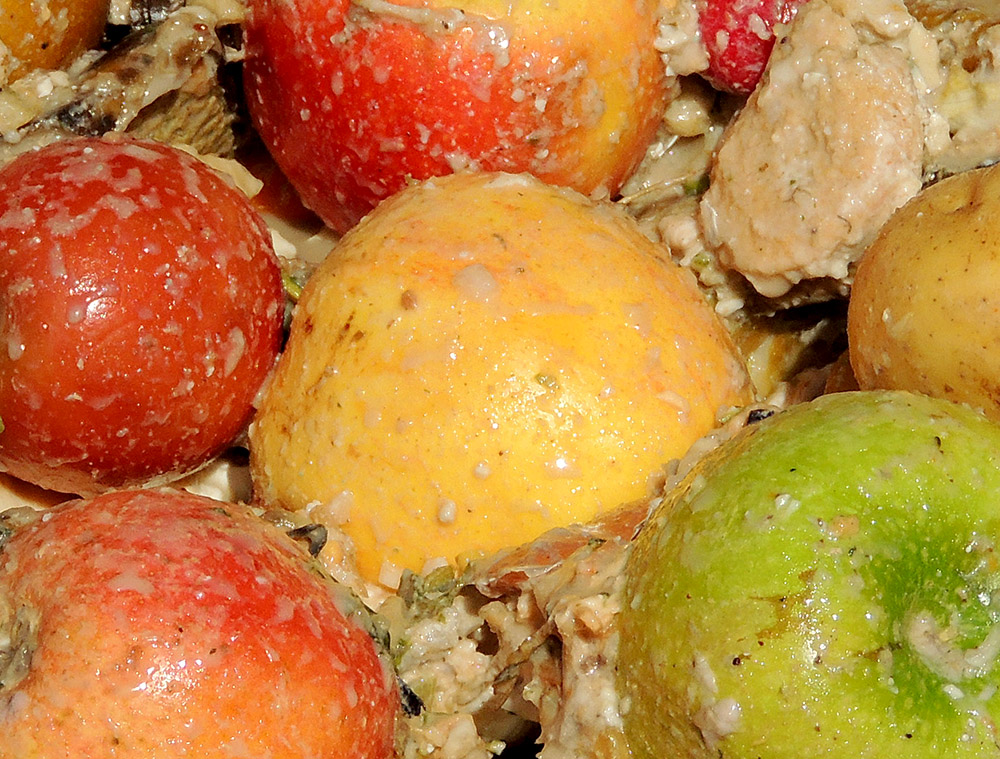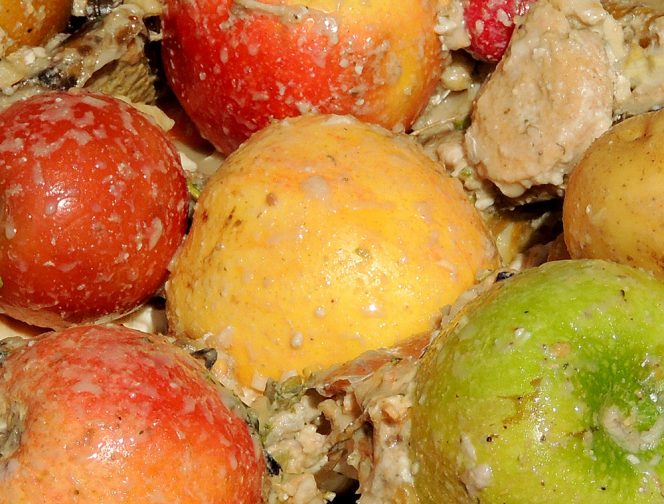Guide to equipment and systems for businesses, institutions and venues that manage food waste on-site.
Nora Goldstein and Charlotte Dreizen
BioCycle July 2017
Businesses, institutions and venues that generate large volumes of food waste have an increasing number of options to manage this organics stream, starting with tools and knowledge to prevent and reduce what is generated in the first place, followed by donation of excess and prepared foods that are still edible. Then comes the question of what to do with the rest. And depending on where these facilities are located, they may not be allowed, by law or regulation, to throw it away with their trash.
Many generators opt to source separate their organics, which are collected for composting and/or anaerobic digestion. But over the past decade, the marketplace has also responded with equipment and systems to manage food waste on-site. The equipment falls into three broad categories:
Dehydrators: Use heat (thermal process) to evaporate the liquid in the food waste; Output is a dry biomass often described by vendors as ready-to-use soil amendment or plant fertilizer.
Liquefiers (also sold as aerobic biodigesters): Utilize fresh water and often biological additives (e.g., enzymes or microbes) that reduce the biochemical oxygen demand (BOD) to meet municipal wastewater limits for discharge to the sewer. BOD is a measure of the amount of oxygen required to finish breaking down the organic material left in the residual liquid.
In-vessel “accelerated composting” units (4-7 days process): Typically require an amendment such as sawdust; Output described by vendors as ready-to-use compost.
All three of these categories are essentially pretreatment systems for food waste, i.e., they biologically or thermally treat the food waste versus only mechanically reducing the volume via maceration or slurrying (preprocessing). In each case, a final management step is required, either curing the dehydrated biomass or compost output until it is biologically stable, or utilizing the municipal wastewater treatment plant in the case of the liquefiers.
Each technology is a volume and/or weight reduction step, which minimizes or eliminates the need for frequent food waste collection. In a state like Massachusetts, which has a disposal ban for commercial organics (generating 1 ton or more/week), utilizing an on-site system may help a generator stay under the 1 ton/week threshold, and thus continue to utilize disposal for what remains.
Based on our research, only a few vendors of in-vessel composting systems designed for use on site at a business, institution or venue, state that finished compost (meets a scientifically robust test for stability) is produced in 7 days or less. The majority state that their process meets pathogen and vector attraction reduction in the vessel (55°C for 3 days), but that additional curing/maturation is needed prior to use. The latter is what is recommended, and thus space should be available on-site or off-site for the curing phase.
Dehydrators And Liquefiers
For businesses, institutions and venues with space constraints for collection bins, reducing the volume of food waste can be a significant advantage. Dehydrators and liquefiers have built in shredders or grinders to size reduce the food waste prior to treatment. Usually, this equipment is installed in the kitchen prep or dishwashing area, so staff does not need larger wheeled containers to transport food waste to the unit.
Both types of equipment need power hook-ups; the liquefiers also utilize fresh/potable water. As noted, most liquefiers discharge to the municipal sewer. Dehydrators will have process wastewater that must be managed. Some systems can be fed continuously; others operate in batch mode (cycles). Vendors of liquefiers should provide documentation on the BOD and total solids of the treated food waste to ensure it meets the discharge limits set by the wastewater treatment plant. (Prior to purchasing or leasing liquefiers, food waste generators should check with the local wastewater authority to see if this equipment is allowed).
The Center for EcoTechnology, which manages the Massachusetts Department of Environmental Protection’s RecyclingWorks program, surveyed vendors of on-site food waste management equipment to provide basic details about their machines. The final document serves as an initial guide to these systems, including dimensions, power requirements, capacity, additives, etc. It does not, however, list daily water usage (for liquefiers), or properties of the outputs, such as BOD levels or product maturity.
Food waste generators in the market for this type of equipment can reference BioCycle’s two-part article series on dehydrators and liquefiers (biodigesters) in October 2013 and January 2014 (tables available in print version only).
The California Department of Resources Recycling and Recovery (CalRecycle) has excellent guidance documents on food waste dehydrators and liquefiers. In California, state regulations do not define dehydrated food waste any differently than unprocessed food waste; it is considered a solid waste and must be handled as such. CalRecycle’s guidance on dehydrators states the following:
• Dried food waste is not compost or a compost product. Food waste dehydrators do not use a biological process to reduce pathogens and decompose food waste into a stable substance.
• If it becomes wet again, the dried food waste can reabsorb water. At this point it will have similar characteristics to unprocessed food waste, meaning it can attract vectors and create odor.
To the best of our knowledge, there is no independent, third party evaluation of any on-site food waste management systems. Therefore it is critical to ask vendors for reference installations that can be toured. The Composting Collaborative is preparing a checklist of questions for food waste generators to ask during these site visits.
Nora Goldstein is Editor of BioCycle. Charlotte Dreizen is a Project Associate with GreenBlue, a nonprofit that seeks to advance the sustainable materials economy. GreenBlue and BioCycle, along with the US Composting Council, are founding partners of the Composting Collaborative, an initiative to unite composters, consumer-facing businesses, and policymakers, among others, to share best practices and resources, as well as generate innovative solutions to shared challenges. CompostingCollaborative.org











